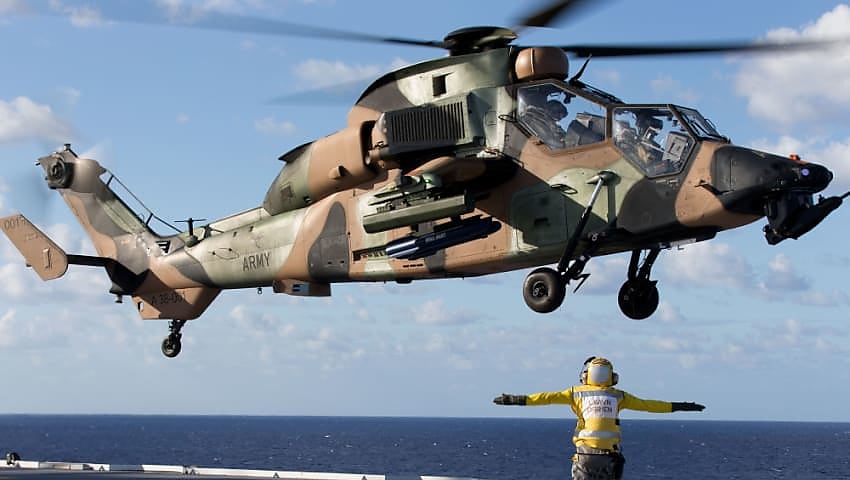Senate estimates has seen the Airbus ARH Tiger aircraft heavily scrutinised, with one senator questioning if the original acquisition was a “poor decision”.
To continue reading the rest of this article, please log in.
Create free account to get unlimited news articles and more!
During Tuesday's Senate estimates, Director General Army Aviation Systems Jeremy King and Chief of Army Lieutenant General Angus Campbell, DSC, AM, fronted the Senate to discuss Australia's Tiger armed reconnaissance helicopters, with many questions centering around the aircraft's Final Operational Capabilities (FOC).
King stated there are nine caveats associated with the final operating capability but stressed "many of those issues are identified as future upgrades as opposed to deficiencies with the aircraft".
LTGEN Campbell also noted that, although the aircraft has reached FOC and could be deployed on operations, "there are nine specific areas of capability that have not met that level we anticipated when we purchased the aircraft".
"We would have to consider either the nature of the operations or the flight envelope in which the aircraft was operating in order to find other ways to mitigate or prevent those lesser capability outcomes being of concern to us on operations," LTGEN Campbell said.
In what would be considered a damning assessment of the aircraft, LTGEN Campbell also noted the Tiger ARH is unlikely to reach its original target.
"I don't think it will be achieving its original target, I do think it has the potential to achieve its budgeted target," he said.
The aircraft has been under fire since last year, when an Australian National Audit Office report revealed the Tigers are not available in sufficient numbers to give pilots the mandated minimum 150 flight hours a year.
Entry to service was scheduled for 2009 but was delayed by seven years, and replacements of the aircraft are already set to begin in the mid 2020s, but Defence maintains there will be no capability void.
"The expectation is, as laid out in the white paper, that there would be a replacement capability that would, as with all our capabilities, seek to bring it in to rise in effect as we were drawing out the Tiger, so as to maintain a capability," LTGEN Campbell told Senate estimates.
The acquisition of 22 of the Tiger helicopters cost $1.1 billion (2001 price), with an additional cost of $397 million (2001 price) for a through-life support contract.

 Login
Login







